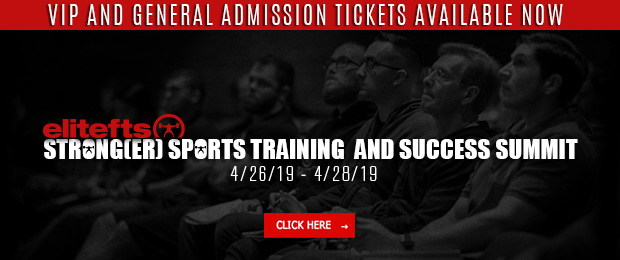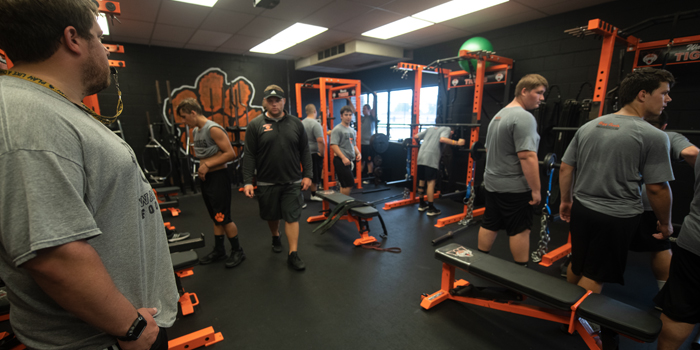
It was a little under a decade ago that I started my journey as a strength and conditioning coach. Often it feels like it’s gone by in a blink of an eye, but as I get closer to the decade mark, I realize that’s barely any time at all in this field. I think about all I’ve learned and even more important how far I have yet to travel. I am very thankful for how I came up in this industry because I could have just as easily ended up on a worse path. It was just happenstance that I ended up around the great coaches that I did.
My first internship was at George Mason University; there, I worked under Sarah Walls, Gabriel Naspinski, and Handy Handerahan. I was fortunate to be around all three. Handy had over 20 years of NCAA experience as a strength coach at that point. Sarah had worked with Todd Hamer at GMU and under Tim Kontos at VCU, and Gabe had worked with one of the greatest strength coaches ever: Buddy Morris. When I look at the family tree of strength coaches that I stumbled into, I am nothing but thankful.
RELATED: How to Get In and Stay In
What started out as just observing and cleaning a weight room has turned into some of the best experiences of my life. These experiences and people shaped my ability to do what I do now. It has not been a cut-and-dry journey of a college strength coach, which is what I thought it was going to be.
Instead, it’s been the ability to work with every type of person and athlete imaginable. I’ve worked in almost every sector with every type of person… eight-year-old kids all the way to people in their 70s with double knee replacements; 16-year-old baseball players with torn rotator cuffs and Tommy John surgery; people with spinal fusions and hip replacements; healthy gifted athletes and healthy ungifted athletes; and the motivated and unmotivated alike. It has been a journey full of the best learning experiences and life lessons I wouldn’t have gotten otherwise.
I recently re-watched Jim Wendler and Dave Tate in their Off-Topic video talk about throwing down your stake and writing down your principles or what you believe in as a coach. I thought about my past mentors and past athletes and clients I’ve worked with and then thought about the fact that I now have interns and younger coaches who work under me. I contemplated this and the fact that I’m approaching 10 years, and I realized that it was about time to throw my sword down where I didn’t believe I had the right to before.
I started to write my principles, and as I wrote the principles, I thought about all the mistakes I made or the things I could have done better. While my principles are my own, I also started writing some hard rules that I didn’t even know I followed until I started writing.
These rules are a culmination of experience and mistakes written for younger strength coaches, who I hope understand the long, long journey they have in front of them. While your principles are and should still be forming, it’s always a good thing to have some rules to follow to keep you on your path towards being the best coach you can be.
Rule #1: Continue to Learn/Know Your Place
This is a two-part rule because they go hand-in-hand. This rule should also be a no-brainer. We live in a day and age where information is right at your fingertips. To be dumb in the time we live in is unacceptable, especially for new strength coaches. You used to have to travel to seminars or scrounge to find good training books in the bookstore. Now seminars are on YouTube and books are online. There are no excuses to be dumb anymore. READ, WATCH, READ, WATCH!
When you’re young in this field, you need to read and watch everything; you aren’t experienced enough to distinguish between good information and bad information, so read and watch it all. The more experience you get, the more you’ll be able to start sorting out the good and the bad. I have to imagine if you're reading elitefts, you’re on the right track, anyway.
LISTEN: Reactive Training Systems Podcast #80 with Dave Tate
The second part of this rule is Know Your Place. This goes hand-in-hand with Continue to Learn because the trend is this: as young strength coaches start to read, watch, and coach more, they start to get a little big for their britches and think they are better than they really are. I’ll sit there and listen sometimes to interns and young coaches talking to each other and I laugh. Before you speak, understand the overwhelming amount of information you don’t know. Think about that and shut your mouth.
The most important way to learn is to coach and observe the people who have been doing it longer than you have. This is even more vital to being a better coach than reading and watching. You just need to get experience coaching. You will learn infinitely more on the floor than you ever will from a book or video. The coaching experience will give you the ability to understand how to apply the information you’ve read or watched and to be able to use what is good and to discard what is not useful.
Rule #2: Coaching is More Important Than Programming/Technique is King
Another two-parter, but they are not mutually exclusive concepts. Buddy Morris said the best piece of advice he could give was, “Learn how to coach; don’t worry about writing programs; that will come.” If that’s not the truest statement in this field, then I don’t know what is.
When I was younger, I was all-consumed by writing the perfect program for an athlete or client. I’ll save you the time… it doesn’t exist. Almost every program can work and not work all at the same time. You could have the worst or best program, and both could potentially work or not work, depending on how it’s coached.
I’m not against online coaching, but I’m for damn sure skeptical when I see all these Instagram coaches hocking their online coaching. Most of a program’s ability to make an athlete better has to do with how it’s coached, not about the sets and reps.
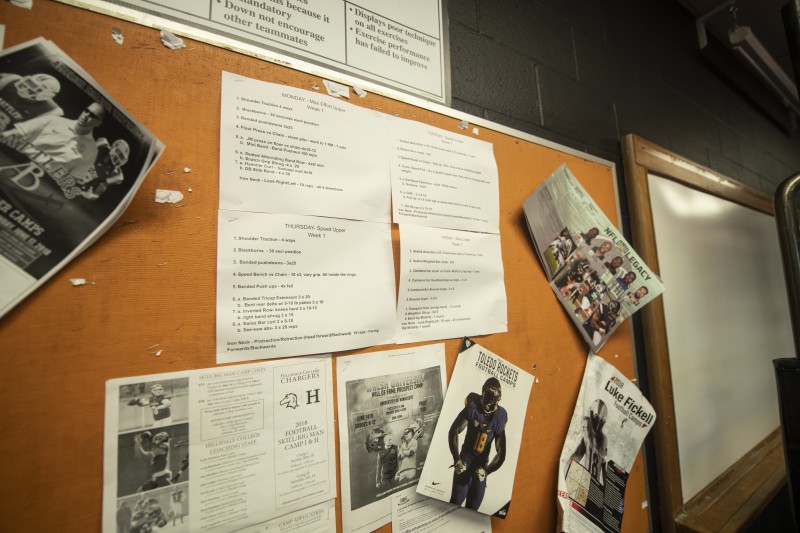
This leads into the second part, which is Technique is King. I don’t care if you are doing a conjugate program or 5/3/1, the principles of how a squat should be performed remain the same. How it looks from person to person may change, but the principles are still intact. Therefore, technique matters above most things…
If you’re not coaching correct technique, programs will fail, progress will stall, or injuries will happen. I don’t care if it’s singles or sets of 20 you are having athletes perform; technique needs to be intact. Bottom line is all of this stems from coaching.
As Buddy said, “Awareness creates cognition; cognition creates motor learning.” It’s up to you, through the art of coaching, to create awareness in your athletes.
Rule #3: Define Your Principles or Your Philosophy
As Jim and Dave said, eventually you must throw your stake down on what you believe in. As a young coach or intern, I wouldn’t go so far as to throw your stake down now because you haven’t had enough experience or adversity to really define what it is you believe in at this point. If you do it now, it will basically be you regurgitating principles of the people you work for.
READ MORE: The ABCs of My Life in Strength, Conditioning, and Fitness
However, you can still be objective enough about each situation you encounter while coaching that you can take those experiences and add them up one by one. Each experience is like a marble, and for every experience, you will add a marble until that becomes a pile, which will eventually become a mountain of experiences. Year by year, you will add or take away a marble until you realize that a handful of marbles seem to always remain, despite any coaching situation you encounter. These will be your principles that form your philosophy.
Below are my six principles. It’s only been recent that I’ve actually written these out; I’m at the point where I don’t believe these will change. However, I will definitely have more experiences that will help solidify them more or refine them in some way.
- Principles Guide Methods, Not the Other Way Around
- Technique is King
- Barbells and Sleds
- Volume Unlocks Potential
- Consistency Will Make or Break
- Strength is the Foundation by Which Athletes and People Grow
Rule #4: You are the Catalyst to Your Athletes and Clients’ Success — Not the Reason
Several times throughout this article, I’ve referred to athletes as “yours” or “my” (just easier to write). They’re not your or my athletes; the ownership belongs to them. The fact of the matter is that if the athletes or people you work with have success, it really didn’t have much to do with you at all. You may have been the catalyst by delivering good coaching, but their success was defined by their consistent work ethic and adherence to the important things that helped them reach their goals. Do not lose sight of the fact that you personally didn’t have much to do with their success.
You were a small piece of the entire puzzle of their journey. However, in regards to their failure, whether you think it’s fair or not, you will be given the blame. Their failure is not something you can wash your hands of, whether you feel it’s just or unjust. Fortunately — or unfortunately — this is the struggle of a strength coach.
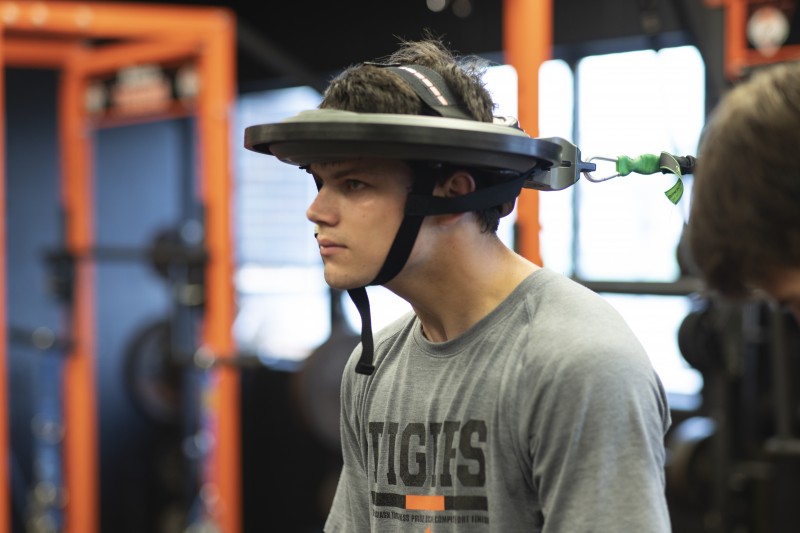
What this rule will hopefully teach you is that there is no rest. You must leave no stone unturned when trying to help your athlete or client be as successful as possible. If they are successful, take pride in the very small part you played; if they fail, then figure out what you could have done better.
At the high school I work at, I formed a powerlifting team that I still currently coach. Four years ago, we started with three kids, and last year, we had 22. At the end of every competition, a lot of parents will come up and congratulate me or thank me personally, by which I always tell them, “I appreciate it, but I really didn’t do anything.”
That is definitely the truth. I really didn’t do much. I provided some tools for the kids, and they utilized them and were consistent. Because of their work ethic and consistency, they were personally successful. It wasn’t because of me.
Rule #5: Do Not Seek Thank Yous and Money
To continue with the previous story of the high school powerlifting team, I formed that team for off-season athletes and for kids who didn’t participate in athletics whatsoever. The point was to give every kid, athlete, and non-athlete a competitive outlet and give them something fitness-related that they could do long into adulthood.
An important thing to note about this is that I don’t get paid extra for coaching powerlifting; I do it to help the kids find value in training and their own health and fitness. My point in saying this is that you will consistently have to do a great deal in this industry without getting paid for it, which is a good thing. It will give you a better perspective on why you do what you do.
This is especially true when you first start out. Don’t expect to get paid for internships. Take every opportunity to work with good strength coaches. Go clean weight rooms, ask to watch, stay late, come early, and volunteer often. You will eventually start to get paid but understand that to be respected and valued, you will always have to do some things for free.
Dave Tate still provides free information and has been doing it since 1998. He still answers every DM he gets on Instagram. He doesn’t have to do it, but I will tell you this: No one can say Dave doesn’t care.
Don’t do it for admiration or thank yous, either. For the most part, this is a thankless job, and that’s OK. If you get into this career and expect a “thank you” every time you feel you did something positive, then good luck trying to last because it’s not going to happen and it shouldn’t, either.
Is it nice to be recognized every now and then? Of course! But understand that most people have no real understanding of strength coaches’ jobs. If someone doesn’t understand your job fully, then how can you expect them to thank you for something they don’t know anything about?
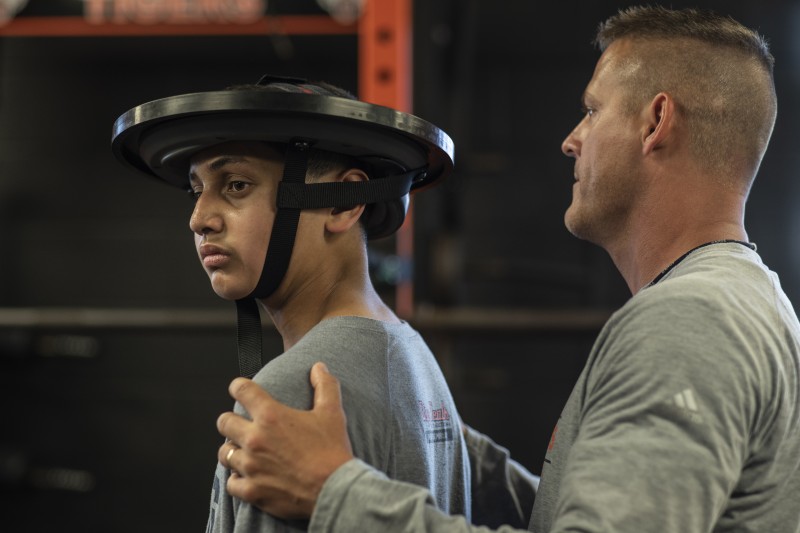
At the end of the day, rest your hat on the fact that you did everything possible to help someone get better and don’t rely on other people’s adulation.
Rule #6: Don’t be a Cheerleader
This is self-explanatory, but your job is to coach, not be a cheerleader. A lot of people disagree with me, but for a long time, I’ve been of the mindset that it is not my job as a coach to motivate an athlete or a client to do anything.
There is something very superficial and fake about standing up in front of a team or a group of people and yelling and cheering so loud like you’re trying to coerce them into performing during the training session. I’ve tried to do it, but I just feel like a fraud.
ANOTHER PERSPECTIVE: 10 Ways to Develop Mental Toughness in Young Athletes
I will explain to athletes until I’m blue in the face why we are doing what we’re doing, but I’m not going to stand up there and try and goad them into training. It’s not up to you as a coach to get the athletes into the weight room; it’s your job to coach them. There’s no teaching self-reliance in that coaching style whatsoever.
These athletes won’t have you there to yell at them forever; at some point, they are going to have to train alone. By standing up there and acting like a cheerleader, you are essentially giving them a crutch that won’t be there later in life. Teach them and help them garner some intrinsic motivation.
Rule #7: Teach Discipline Over Motivation
We can all thank Jim Wendler for this piece of advice. This is something I tout heavily to any athlete or client I coach. I don’t care if they are eight or eighty; everyone needs to understand this.
This rule solidifies Rule #6. If you sit up there and try and be a cheerleader, you are only extrinsically motivating them. You are failing to teach them the greatest lesson of all about training which is… the majority of the time, you will not feel like training. Most of the time, you will not feel like getting under a heavy bar. People need to understand that “not feeling like training” doesn’t matter. The discipline to do what you know you must do is what matters.
I had a conversation with one of my clients (who is in her late 40s, is married, has a kid, and is in a high-up position at work) about this one night. She was about 10 minutes late coming in because of traffic. It was 7 o’clock at night, and she was quickly putting her chucks on getting ready to train (she recently started competing in powerlifting), and I asked her how she felt about all the people she works with who say they are too busy to train.
She looked up at me, as she was quickly tying her shoes, and said without hesitation, “Oh... well, they’re all full of shit.”
It was one of the single most happy moments in my coaching career.
Rule #8: Lead by Example/Encourage Competition
One of the best pieces of advice that I ever got from Sarah Walls, who I believe got this from Tim Kontos, was that every coach should compete in something. Whether it be powerlifting, bodybuilding, CrossFit, etc., it doesn’t matter. Coaches just need to compete.
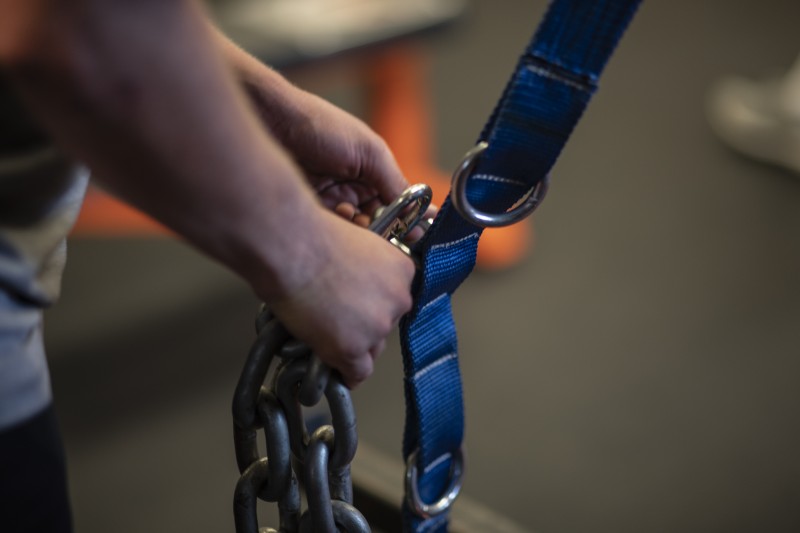
If you are a strength coach, I’m almost positive at some point you either played high school or college athletics. Coaches will often use this as a point of reference with their current athletes to explain to them that they know what they are going through both physically and mentally. I agree and disagree… While you may remember what you did, you probably don’t remember how it felt.
RELATED: Through the Players' Eyes
Sarah explained it to me this way when I was an intern. She said you must feel what these athletes feel every day coming into a training session. They have hours of practice, they stay up late doing school work, and some have a job or two jobs on top of their sports and school, then they must come into the weight room and put their body through more hard work. You may remember doing those things, but that is a far cry from remembering what those long days felt like.
To this day, I know what it feels like to work 12 to 14 hours a day, to come home to a family, to work a second job and to train and compete with all those things. The athletes and people I work with know this, and I really believe it becomes mutual respect between a coach and an athlete. They know you are going on the journey with them.
On the other side of this coin, if you are training the general public, I believe it is a necessity to encourage them to compete in something. It gives them a great deal more focus and increases the likelihood that they will be consistent with their training.
Currently, I have six clients who are anywhere from 48 to 71 who compete in powerlifting. Most started competing within the last six years and prior to this hadn’t competed in a sport since high school. I will say this: they are the most consistent clients I’ve had in my entire coaching career.
Rule #9: Organize Your Own Life Before You Try and Organize Someone Else’s
My two favorite quotes that go along with this rule are from Dr. Jordan B. Peterson and Admiral William McRaven.
Peterson said, “I don’t think you should trust people whose primary goal when they’re attempting to change the world for the better is to change other people.”
Admiral McRaven said, “If you want to change the world, start off by making your bed.”
Both quotes essentially say the same thing, which is to get your own life together before you try and organize someone else’s. This coincides with Rule #8. You can’t sit up there and tell your athletes and clients to do something, but you never do it yourself.
Don’t get on your athletes about being consistent with training while at the same time, you only work out once every couple of weeks. Don’t harp on your clients about eating better while you are over there slamming fast food all day, every day (unless JM Blakeley oversees your diet). People see through this, so good luck trying to coach people when they see you as a fraud.
WATCH: Table Talk — The Future of Powerlifting with Dave Tate and Joe Sullivan
It seems like people never have time to make their bed or to train, which is an absolute joke. If you can’t take three minutes to do something as simple as making your own bed, then you have no business giving other people advice on what they should be doing with their life. If you can’t find at least 30 minutes to train a few times a week, then you have no business coaching.
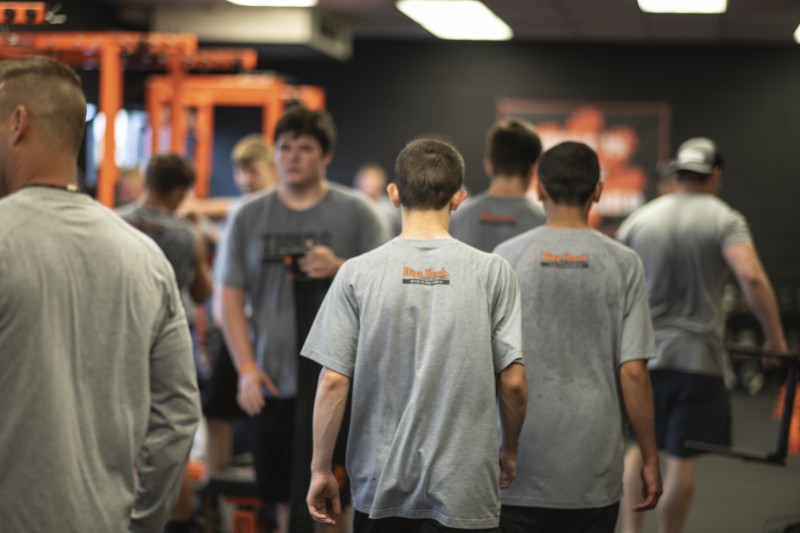
Rule #10: Find Your Voice/Command the Room
I have been fortunate enough to work with interns and younger coaches, and as I said earlier, I’ll sit there and listen to the conversations they have with each other or even sometimes the things they say to me, and I just laugh. It gives me a better perspective on myself as a coach and a more objective understanding of how much I don’t know and how far I have yet to travel. As I listen to their discussions, I rarely hear them, but instead, I hear regurgitation… It could be what they just watched, what they just read, or who they coach around the most.
When young coaches and interns are around a more experienced coach, they often take on their qualities and mannerisms or programming styles. This is not a bad thing, but a young coach needs to be objective about this and understand while it’s OK to do this, they also need to be finding their own voice at the same time. Strength and conditioning doesn’t need clones; it just needs good coaches.
Finding your voice can be daunting, and it takes a while. It can be so daunting that it leaves a young coach feeling insecure with their ability to run a session. However, you must command the room regardless. If clients or athletes feel that you are nervous, the whole session will implode.
When I first teach my students at the high school how to squat with a barbell, you can visually see their hesitancy in the unrack and in the descent. I always tell them that once they are under the bar, regardless of whether it is true, they must tell themselves they are the best squatter alive. Being confident under the bar will make the movement itself that much better.
It’s the same thing while coaching a training session. At this point in time, regardless of whether it’s true, you must tell yourself you’re the best coach in the world; that no one can lead this session better than you. The confidence will show externally, and you will be able to command the room better and have a more productive session.
However, after the session, you need to come back to reality and understand you are not the best coach and you need to look objectively at the long list of things you could have done better.
Rule #11: Less is More
Along the same vein as Rule #10, it not only matters how you say what you say, but it also matters how much you say while coaching.
SAY WHAT: A Better Language for Coaches
Interns and young coaches have a habit of trying to give every cue imaginable to an athlete to try and fix a movement. It will seem like they are trying to fix 10 different things at one time all while the client is performing a squat. The client can’t process all those things at once, so the movement won’t look any better at all. There’s a good chance it will be worse.
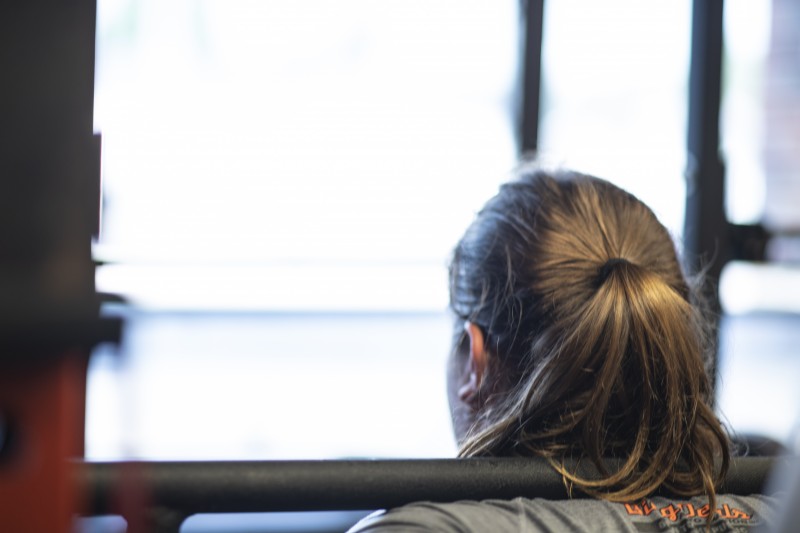
Pick one or two things to fix and focus on that. Less is more. Once they fix that, then move on to something else. Not everything has to be perfect right away. This is also a sure-fire way to make an athlete or client, especially a new one, feel worthless. If you tell them 10 different things they’re doing wrong at one time, you are essentially telling them 10 different ways they suck. That’s not the best way to garner confidence in someone.
You also need to be aware of why they are performing the movement so wrong in the first place. There’s a good chance that when you were explaining how to do the exercise in the first place, you spouted off a novel of information instead of giving them a sentence about how to do the exercise correctly.
When it comes to coaching exercises, less is more regarding explanation and refinement. Not everything needs to be fixed right away.
Rule #12: Take as Many Life Lessons as Possible
If you are a college or high school strength coach, or even a private strength coach, then you probably see a large volume of people on a day-to-day basis. That is too much human interaction to not garner some life lessons along the way.
You need to understand that most people in life are not privy to the amount of human interaction that we are. Whether you know it or not, this gives us an entirely different perspective on people, relationships, and life in general. You are doing yourself a disservice as a coach and a human if you don’t take advantage of this fact.
Between being both a coach or a teacher at the college, high school, and private levels, I can’t even guess how many athletes and clients I’ve worked with at this point. For me not to let those interactions have an impact on me and shape me for the better as a coach, a husband, a father, a brother, etc., would be foolhardy on the highest level.
I believe this is the problem with most people: the pool of human interaction they have to pull from to shape their ideas and beliefs is so small that it becomes so skewed and shortsighted. Coaching allows you to see the similarities and differences we all have, and both are extremely important to appreciate.
From a training perspective, it’s just as important to take as many life lessons as well. I tell my high school students all the time that when they take this class, they are doing something different than the rest of the kids in the school. Not better, but different.
RELATED: 5 Ways to Make Weight Rooms Work for Our Kids
There’s a unique perspective getting under a heavy barbell or doing 20 reps of squats gives you that most other things don’t. It shapes and changes the things that you previously thought were both mentally and physically challenging. Suddenly, some things you used to think were significant become trivial, and on the other side, things you thought were important become that much more vital. Besides the physical strength, there is an immeasurable increase in mental strength that getting under a heavy bar day in and day out gives you that other things don’t.
People may read this and tell me to “relax” and “it’s just lifting weights.” Maybe they are right, but as a coach and a person, I can only tell you the same thing Dave said:
"All I needed to know about life, I learned in the gym."
Ryan Wood works as a strength and conditioning coach for SAPT (Strength & Performance Training, Inc.) in Fairfax, Virginia, where he trains clients ranging from 8 years old to their mid-70s. He also works as a teacher for Fairfax County Public Schools, where he teaches Personal Fitness, a strength and conditioning elective course for high school students. Ryan holds a CSCS and a bachelor's degree from George Mason University in Health and Physical Education.










